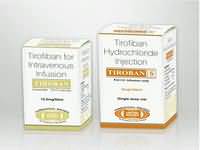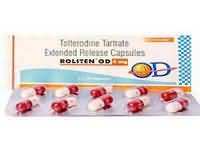reboxetine

CLINICAL USE
Antidepressant
DOSE IN NORMAL RENAL FUNCTION
4–5 mg twice daily; maximum 12 mg daily
PHARMACOKINETICS
Molecular weight :409.5 (as mesilate) %Protein binding :97 (92% in elderly) %Excreted unchanged in urine : 10 Volume of distribution (L/kg) :26–63 litreshalf-life – normal/ESRD (hrs) :13/26 DOSE IN RENAL IMPAIRMENT
GFR (mL/MIN)
20 to 50 : Dose as in normal renal function 10 to 20 : 2 mg twice daily and adjust according to response <10 : 2 mg twice daily and adjust according to response DOSE IN PATIENTS UNDERGOING RENAL REPLACEMENT THERAPIES
CAPD :Unknown dialysability. Dose as in GFR <10 mL/min HD :Unknown dialysability. Dose as in GFR <10 mL/minHDF/high flux :Unknown dialysability. Dose as in GFR <10 mL/minCAV/VVHD :Unknown dialysability. Dose as in GFR 10 to 20 mL/min IMPORTANT DRUG INTERACTIONS
Potentially hazardous interactions with other drugsAntibacterials: avoid concomitant use with macrolides and linezolidAntidepressants: risk of increased toxicity with concomitant use with MAOI’s; avoid concomitant use with fluvoxamine Antifungals: avoid concomitant use with imidazoles and triazolesAntimalarials: avoid concomitant use with artemether with lumefantrineCiclosporin: use with caution as high concentrations of reboxetine inhibit CYP3A4 and CYP2D6Sibutramine: increased risk of CNS toxicity – avoid concomitant use ADMINISTRATION
Reconstition
– Route
Oral Rate of Administration
–Comments
–.
See how to identify renal failure stages according to GFR calculation
See how to diagnose irreversible renal disease
Home









